Search
Did you mean: Justinian I?
Search Results
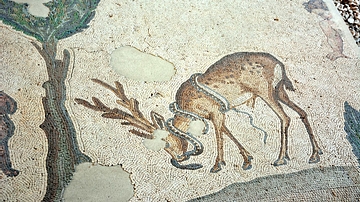
Image
Stag & Snake, Byzantine Mosaic
The stag and the snake mosaic: In some ancient texts, the stag is seen as a rival to the snake. It can also draw a snake out of its hole with its breath. The deer was a symbol of fertility and the animal of Artemis. The stag is illustrated...
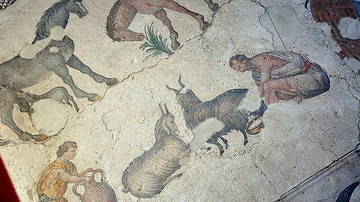
Image
Herdsman Milking a Goat, Byzantine Mosaic
Herdsman milking a goat: An old bearded shepherd is milking his goat and a boy is holding a milk jug. This scene reflects pastoral life. Period: Early Byzantine, circa 6th. century CE. Place: Constantinople, (Modern Istanbul, Turkey). Great...
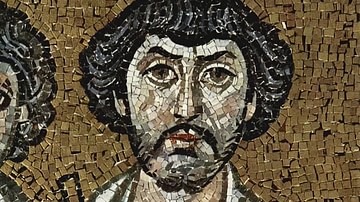
Image
Belisarius
Belisarius may be this bearded figure on the right of Emperor Justinian I in the mosaic in the Church of San Vitale, Ravenna, which celebrates the reconquest of Italy by the Byzantine army under the skillful leadership of Belisarius. The...
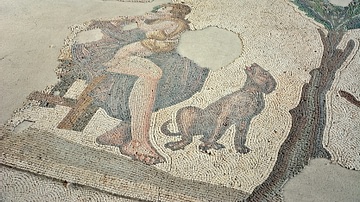
Image
Mother & Dog, Byzantine Mosaic
Mother and the dog: A mother is breastfeeding her baby. The scene is a representation of Isis with her child Horus. A dog on the left of the woman is looking at her with its raised head. Period: Early Byzantine, circa 6th. century CE. Place...
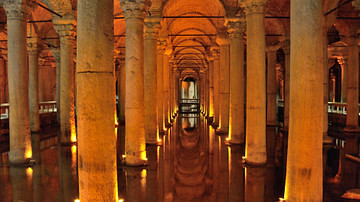
Image
Columns of Basilica Cistern, Istanbul
Located across the Hagia Sophia Museum, Yerebatan Sarayi is also known as the Basilica Cistern because of a basilica that was once located nearby as a cultural centre. It is the largest surviving underground cistern of Istanbul. Fatih Cistern...
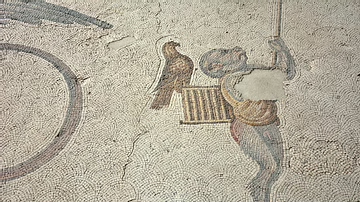
Image
A Monkey Bird-Catcher, Byzantine Mosaic
The Monkey as a Bird-Catcher: The monkey under a date tree is holding a long stick in his hands and trying to catch birds. He has a wooden cage on his back with a bird on it. Monkeys are known to have been used in some chores. Period: Early...
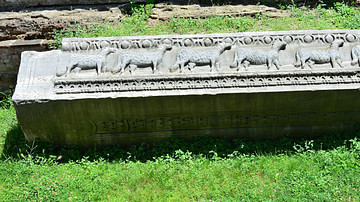
Image
Remnants of Theodosius' Hagia Sophia
Remnants of Theodosios' Hagia Sophia. A lamb relief representing 12 apostles. 5th. century CE, Hagia Sophia, Istanbul, Turkey. The first name of the Church was ‘’Megale Ekklesia’’ which means ‘’the Grand Church’’. The first Hagia Sophia...
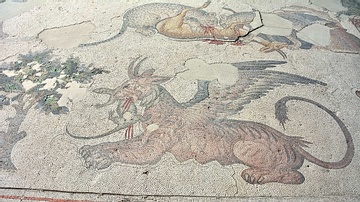
Image
Tigriss-Griffin Byzantine Mosaic
The tigriss-griffin: This tigriss (female) Griffin has two horns and wings and a wild look on its face. Crimson drops of blood come out of its mouth. Period: Early Byzantine, circa 6th. century C.E. Place: Constantinople, (Modern Istanbul...
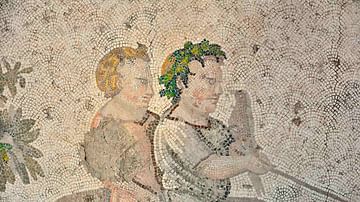
Image
Byzantine Mosaic of Children Seated on a Dromedary
Two children are seated on a dromedary. One of them wears a wreath around his head and is holding a bird in one hand and reins with the other hand. There is also a guide in front of them. Period: Early Byzantine, c. 6th century CE. Place...
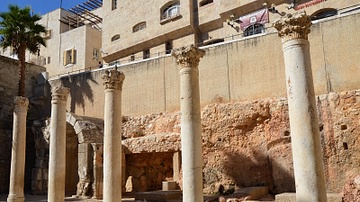
Image
Reconstructed section of the Cardo Maximus of Aelia Capitolina (Jerusalem)
Reconstructed southern section of the Cardo Maximus of Jerusalem. Paved and lined with columns, the Cardo Maximus was the main road that ran through the Roman and Byzantine city and also served as the center for the local economy. This portion...